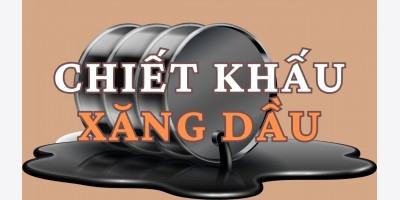Giá dầu bất ngá» tăng mạnh
Giá dầu thô trong phiên châu Á sáng nay Ä‘ã phá vỡ mức cao nhất trong hai năm qua láºp được vào ngày 07/03 để láºp mốc cao nhất trên 107 USD/thùng sau khi tình hình chiến sá»± ở Libya có diá»…n biến má»›i, càng dấy lên nhiá»u quan ngại vá» nguồn cung dầu từ quốc gia sản xuất dầu đứng thứ ba trên thế giá»›i này sẽ bị cắt giảm kéo dài.
Ngay từ phiên Mỹ tối qua, giá dầu Ä‘ã tăng 2,4% sau khi lá»±c lượng trung thành của tổng thống Libya- Muammar Qaddafi dành lại quyá»n kiểm soát đối vá»›i cảng dầu là Ras Lanuf và khu dá»± trữ năng lượng Brega.
Vào lúc 8h18 sáng nay (giá» Việt Nam), giá dầu thô WTI giao kỳ hạn tháng 05 Ä‘ang giao dịch ở mức 107,27 USD/thùng từ mức chốt phiên hôm qua tại 106,77 USD/thùng.
Jonathan Barratt, giám đốc Ä‘iá»u hành của Commodity Broking Services Pty ở Sydney nói rằng thị trÆ°á»ng Ä‘ã chuyển hÆ°á»›ng tích cá»±c do phản ứng lại những tin tức vá» tình hình căng thẳng ở đất nÆ°á»›c vùng bắc phi này, mà gây ảnh hưởng đến sản lượng dầu.
Các nhà đầu tÆ° Ä‘ang tạm nguôi ngoai vá» tiêu thụ nhiên liệu ở Mỹ giảm trong tuần qua, và hầu hết táºp trung vào cuá»™c chiến chÆ°a có hồi kết ở Libya. Theo ông Gene McGillian, chuyên gia phân tích kiêm nhà môi giá»›i của Tradition Energy ở Stamford, Connecticut Ä‘ã nói: “các sá»± kiện xảy ra ở Trung Äông, đặc biệt là cuá»™c chiến ở Libya Ä‘ang tiếp diá»…n là những yếu tố quan trá»ng há»— trợ thị trÆ°á»ng. Việc giá Ä‘iá»u chỉnh lên mức 107 USD/thùng là Ä‘iểm thỠđể xem liệu giá có khả năng tăng nữa không hay sẽ rÆ¡i trở lại mức 105 USD/thùng”.
Barratt của Commodity Broking Services cÅ©ng nói thêm rằng, nếu giá dầu vượt mức 107 USD/thùng, Ä‘iểm dừng tiếp theo sẽ là 110 USD/thùng.
Oil Extends Gains as Libyan Conflict May Prolong Production Cuts
Share Business ExchangeTwitterFacebook| Email | Print | A A A
By Margot Habiby and James Paton
April 1 (Bloomberg) -- Oil in New York rose for a second day amid concern the conflict in Libya, Africa’s third-largest producer, will prolong output cuts.
Prices rose 2.4 percent yesterday to the highest in two- and-a-half years after troops loyal to Libyan leader Muammar Qaddafi retook control of the oil port of Ras Lanuf and shelled Brega, another energy hub. Libyan oil output fell 72 percent in March to a 49-year low, a Bloomberg News survey of oil companies, producers and analysts showed.
“Libya is the key,” Jonathan Barratt, managing director of Commodity Broking Services Pty in Sydney, said by phone today. “The market tends to flow with what the rebel forces are doing. When the rebels are getting on top of things, crude oil starts to come under pressure, and as Qaddafi tries to gain control, there’s more concern for the region.”
Crude for May delivery rose as much as 93 cents, or 0.9 percent, to $107.65 in electronic trading on the New York Mercantile Exchange and was at $107.42 at 11:07 a.m. in Sydney. The contract climbed $2.45 yesterday to $106.72 a barrel, the highest settlement since Sept. 26, 2008.
Futures surged 17 percent from January through March, the best quarter since the period ended in June 2009. Oil advanced 10 percent in March for a seventh straight monthly gain. That’s the longest consecutive number of increases since the contract started trading in 1983.
Market ‘Catalyst’
Libyan oil production tumbled by 995,000 barrels in March to 390,000 barrels a day in the Bloomberg survey. Libya was the third-largest oil producer in Africa before the conflict and pumped 1.59 million barrels a day in January, according to data compiled by Bloomberg.
“Events in the Middle East, particularly the fighting that continues to be going on in Libya, are providing support for the market,” said Gene McGillian, an analyst and broker at Tradition Energy in Stamford, Connecticut. “The market seems to be searching for a catalyst to continue the rally.”
The Organization of Petroleum Exporting Countries’ crude output dropped 363,000 barrels, or 1.2 percent, in March to an average 29.022 million barrels a day, the lowest level since September, as increases from Saudi Arabia failed to make up for the decline in Libyan production. Saudi output rose by 300,000 barrels a day to 9 million, the survey showed.
Rebels withdrew from Ras Lanuf in the face of artillery and rocket attacks after advancing toward Qaddafi’s hometown of Sirte. Many insurgents retreated from Brega, east of Ras Lanuf, to regroup in Ajdabiya farther along the coast, about 100 miles (160 kilometers) from the rebel stronghold of Benghazi, the Associated Press said.
Syria, Yemen
The strife in Libya, holder of Africa’s largest oil reserves, is the bloodiest in a wave of uprisings that has toppled the leaders of Tunisia and Egypt and spread to Algeria, Bahrain, Iran, Oman, Syria and Yemen.
Oil futures yesterday traded as high as $106.83 a barrel, failing to break through resistance at $106.95, the 30-month high reached in intraday trading March 7. Prices often don’t extend gains when traders’ sell orders are clustered at specific levels, creating so-called price resistance.
“If we take out $107, then $110 is close behind, and if that happens I think you’re going to have an adverse effect on equities,” Barratt of Commodity Broking Services said.
Oil also rose amid reports that the U.S. economic outlook is improving, a sign that fuel demand may increase.
Fewer Americans filed applications for unemployment benefits last week, a sign the labor market is firming heading into the second quarter. Jobless claims dropped by 6,000 to 388,000 in the week ended March 26, Labor Department figures showed yesterday in Washington. Claims were at 375,000 in the week ended Feb. 25, the lowest level since July 2008.
Total crude inventories climbed 2.95 million barrels in the week ended March 25 to 355.7 million as imports increased for a fourth week, the Energy Department said. It was almost double the median estimate for a gain of 1.5 million barrels forecast by analysts in a Bloomberg News survey.









